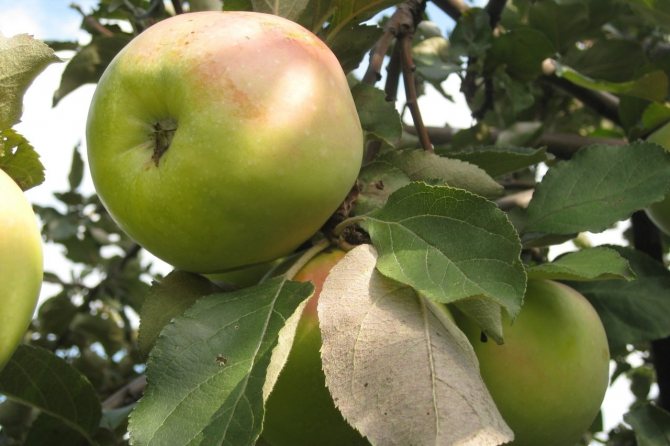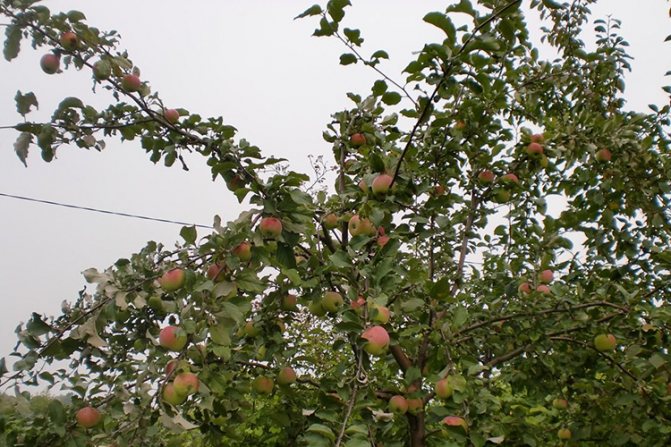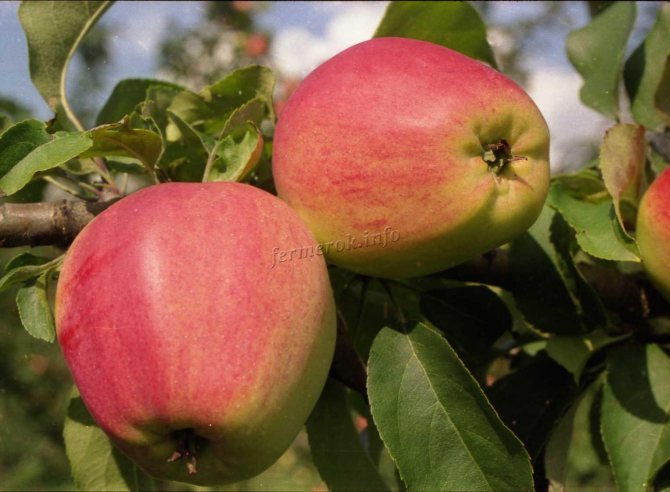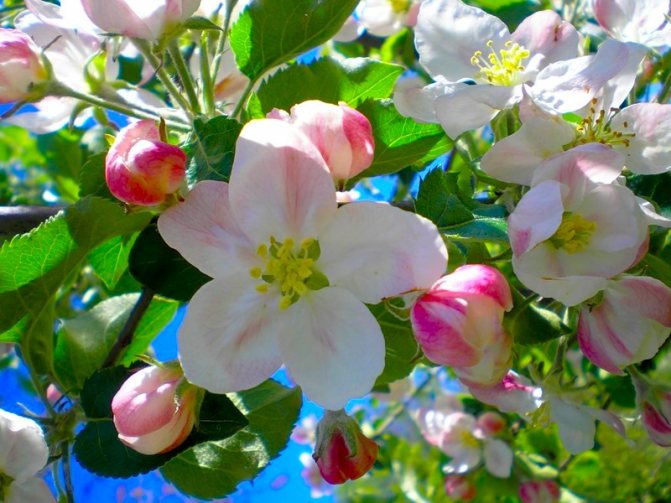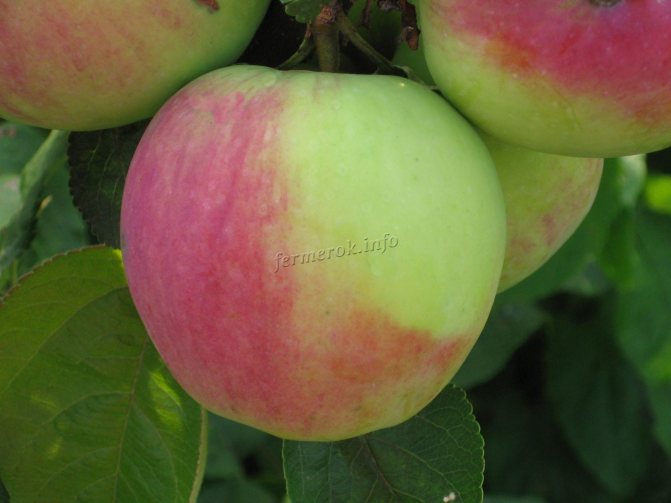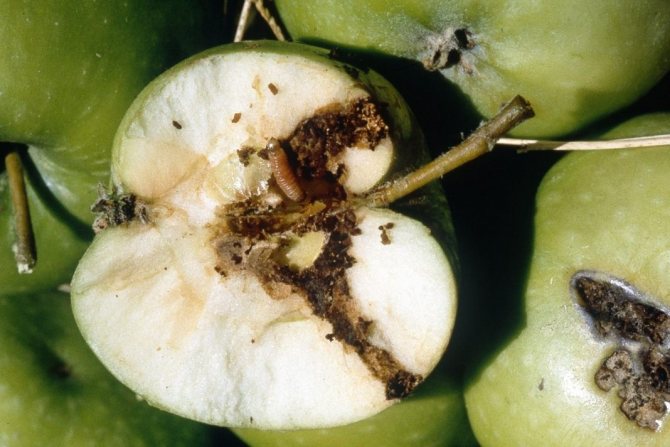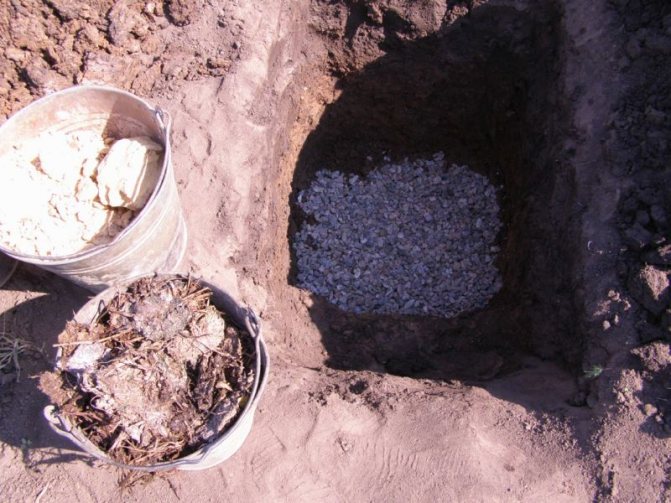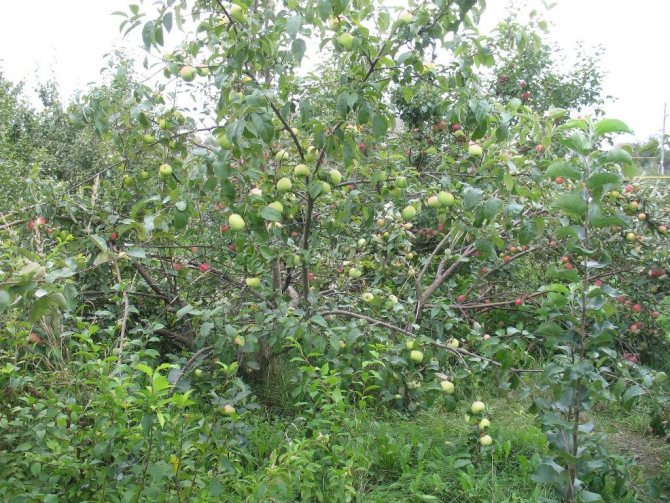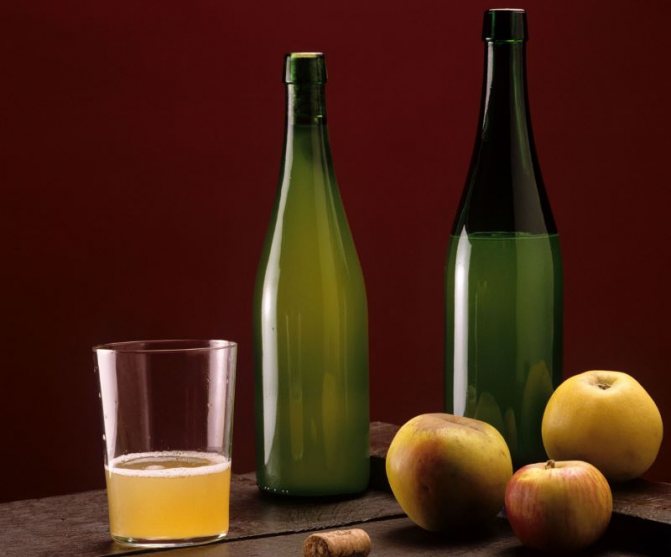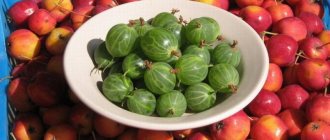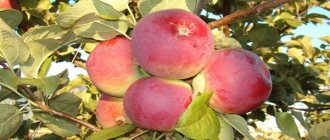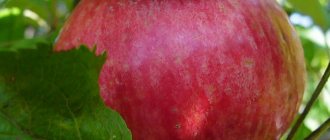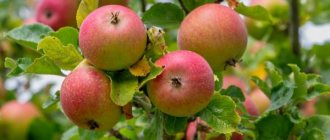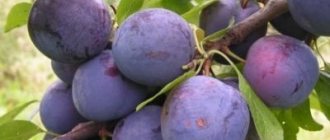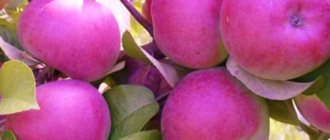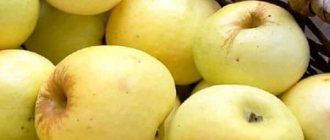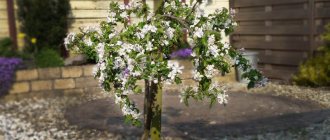»Gardening» Apple tree »Apple tree Orlovsky Sinap - growing rules
0
140
Article rating
Apple-tree Orlovsky Sinap is a classic hybrid with late ripening. The frost-resistant fruit crop is grown not only by gardeners of the southern climatic zones, but also in the northern regions. Has high yield rates. Apples are stored for a long time without losing their presentation and taste.
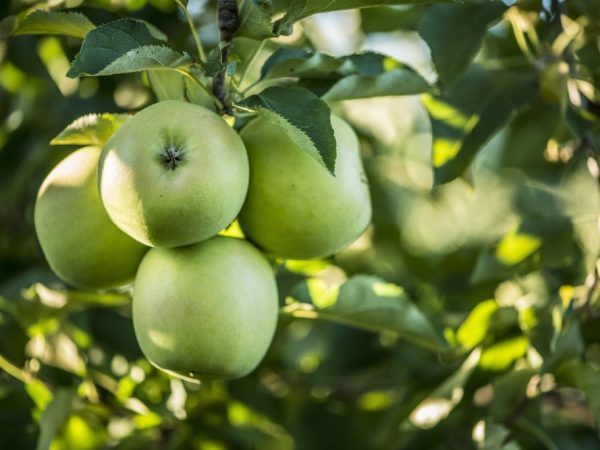
Apple tree Oryol Sinap - growing rules
Description of the variety
Appearance
Vigorous tree with a wide spreading crown and thick branches. Round crown, not thick, which is convenient in the care of the crop.
Tree height
Depends on the rootstock on which the seedling was created. The most common ones are - semi-dwarf with the strength of growth up to 4.5-5 m in height.
Crown width
Proportional to the height of the tree and rarely exceeds it.
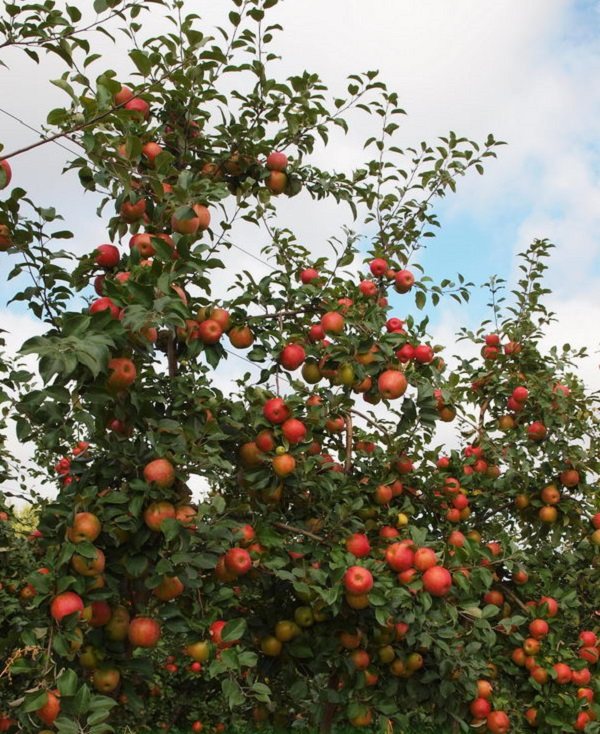

The crown of the young Oryol synap.
Branches
Strong, massive branches depart from the trunk at right angles, but grow at the same time upwards.
Leaves
Large, pubescent, oval in shape. They can be flat or convex.
Yield
Above average... With good care, it reaches 130-170 kg from an adult tree.
Fruit
Large, 140-170 gr., with a dense, shiny skin and a slight blush. Apples are yellow-green in color during picking, and golden-yellow during storage. The pulp is pale green, loose and juicy. Fruit taste is harmonious, with a slight sourness.
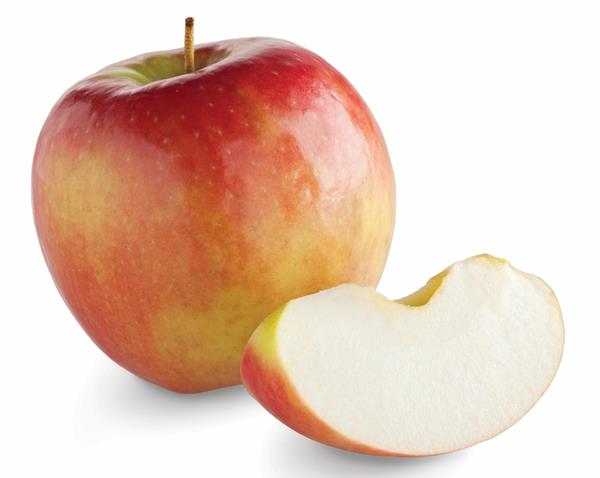

The fruits of the Oryol synap.
Tasting assessment
4,3-4,7 points on a 5 point scale.
Winter hardiness
Above average reaches -28 ° Ϲ... The tree is rarely damaged by winter frosts.
Disease resistance
Average, including apple scab. Wood may be affected by scabs in summer or autumn during particularly humid months.
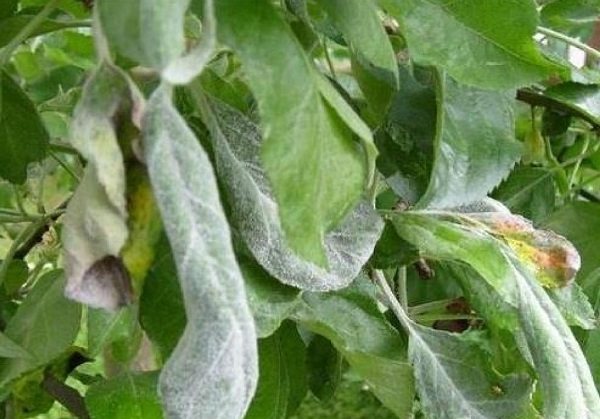

The Oryol synap needs scab treatment.
Important! Prevention and treatment of fungal diseases can be carried out with agents containing beneficial bacteria (Fitosporin, Alirin, Gamane). The fruits from the treated tree can be eaten on the same day.
See a brief overview of winter varieties of apple trees (including the Oryol synap) in the video below:
Gardeners reviews
Elena T, 37 years old, Moscow. “Oryol Sinap is the latest apple tree in our garden. We harvest at the beginning of October before the first frost and immediately put it into storage. Freshly picked apples are sour and tough, but when they lie down for a couple of months, they become much tastier! As they explained to me, all late varieties are like this: they ripen during storage. We eat them until April and are very happy about it. I grow without chemicals and fertilizers, so that they have only one benefit .. "
Vasily Ivanovich, Nizhny Novgorod. ‟I have two Sinapas: Orlovsky and Severny. I grafted them myself on a seedling grown from seeds, took the scion from a neighbor. The tastier of them is Orlovsky, and the apple is larger. But I don't like that the trees have grown huge. They take up more than a hundred square meters of land, and the hand does not rise strongly to cut off. But he pulled a hammock between them, the branches are thick, the trunk is strong - they can withstand. "
Tatyana. Saratov. ‟In our city, the Gardens of the Volga Region trade in Sinap, they sell them from a gazelle all winter. It is unlikely that they would plant bad varieties.Apples are juicy, slightly sour, they decided to plant such apples in the country. "
Landing
Like all apple trees, Oryol Sinap loves fertile, breathable soils. Does not tolerate waterlogging and high standing groundwater. Choose for landing well lit placeprotected from strong northerly winds.
In autumn
Autumn planting preferred for apple trees 3-4 years old winter-hardy varieties. Such "adult" seedlings adapt less well to new living conditions, but they tolerate frost better. Do it late September - mid-October months before the onset of frost.
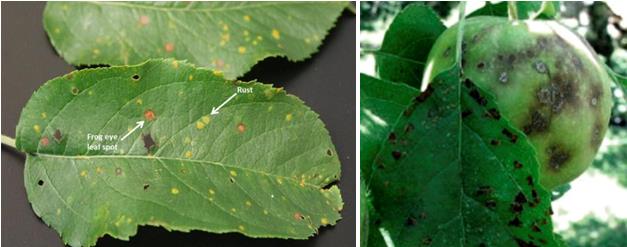

In the fall, apple trees are planted 3-4 years old.
Watch the video on how to properly plant apple trees in the fall:
In the spring
Spring planting fit 1-2 year old seedlings, weakly resistant to winter frosts, but more flexible to growing conditions.
Start it in the middle of April after thawing the soil and finish in the middle of May to abundant sap flow of trees.
Advice! A tree of 1-2 years old is less sick when planting and takes root better than a 3-4 year old tree.
For information on how to plant an apple tree in spring, see the following video:
Five main rules when planting an apple tree, so that it will definitely take root:
- Do not deepen the vaccination site cutting - it should be 5-7 cm higher than the soil;
- Tie a seedling to a peg... Winds sway a young tree, and small sucking roots can break off;
- Do not add fresh manure to the planting hole - the roots will "burn". They can mulch the near-trunk circle, retreating from the trunk 10 cm, and only during spring planting;
- When planting in autumn, cover the tree for the winter. white covering material;
- Planting an apple tree into a heavy, fat land, add sand to it - this will increase the moisture and air permeability of the soil. Black soil should be added to sandy soil.
Growing region
Despite the fact that Sinap Orlovsky was bred at the Research Institute, more than 100 years later it took root in nature and it has its own natural habitat, where this variety has become part of the local flora. Most often, this apple tree is found in the territory of Belarus. Also, the regions of natural growth of this variety are:
- Central part of Russia.
- Northern regions of the Russian Federation.
- Srednevolzhsky region.
- Eastern part of Ukraine.
Areas of natural growth are several regions of Belarus and the following regions of Russia:
- Northwestern;
- Middle Volga;
- Central.
The variety gets along well in other regions with proper planting and compliance with the basic rules of care (see below).
In these regions, the following varieties have also proven themselves well: Yellow Sugar, Zolotaya Kitayka, Mantet, Kandil Orlovsky and Antonovka ordinary.
Care
In order for a tree to grow well and bring a rich harvest, you need take care of his health and growth conditions.
Sinap Orlovsky - an unpretentious apple variety and does not require much attention to itself. Caring for it consists in pruning the crown, watering in dry weather and spring-winter dressing (if desired).
The only feature of this apple tree is the high need for calcium, which she takes from the soil. Without this trace element, the yield of the tree decreases. You can determine the lack of calcium by the bluish tint of the leaves, their darkening and curling.
Important! Heavy soils are richer in calcium than sandy soils.
Lime fertilizers will help to compensate for the lack of calcium:
- A piece of chalk;
- Dolomite flour;
- Slaked lime;
- Crushed eggshells.
Pruning
- Crown pruning can be done in early spring or late autumn, but before the onset of persistent frost.
- In summer can only be deleted severely diseased branches, carefully covering the pruning site with garden pitch.
- Tops are removed in autumn and spring (branches growing vertically upwards) and damaged branches.
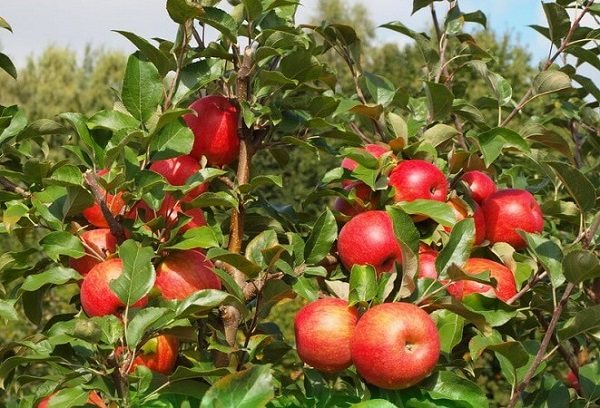

The tops must be removed.
Crown formation
Crown formation is performedby removing thickened branches and giving the tree the desired shape:
- Rounded;
- Pyramidal;
- Discharged-tiered.
Watch the video on how to properly trim and shape the crown of an apple tree:
Disease susceptibility
Sinap Orlovsky is moderately resistant to scab and powdery mildew.


Scab is treated with fungicides.
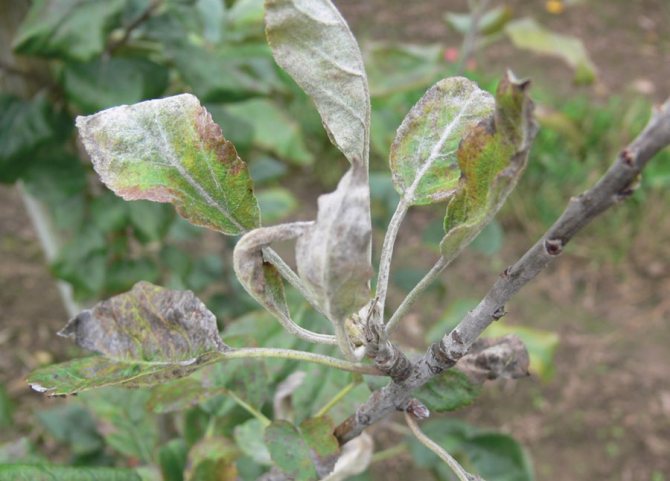

Copper sulfate helps with powdery mildew.
To prevent infection, it is imperative to carry out preventive treatments of the garden:
- control the state of branches, broken off and damaged must be removed with garden tools (pruning shears, saws). Cutting points are treated with a lime solution;
- inspect the integrity of the bark... In case of damage, they are stripped, and the wounds are closed up with garden pitch;
- spraying is carried out in the fall, after harvest... For processing use 3% solution of copper sulfate;
- in early spring (before bud break) spend preventive treatment with Bordeaux liquid.
To replenish calcium in the soil, use the liquid preparation Calbit C. It improves the structure of fruits, eliminates such a problem as bitter pitting that occurs when there is a lack of calcium in the ground. Increases the keeping quality and transportability of fruits.
Spray foliage in the evening. For 10 liters of water, use 10–20 ml of the drug. The product is not recommended to be combined with the use of preparations containing sulfur and phosphorus.
Read more about diseases of apple trees in the article: "We treat diseases in apple trees - when and how to treat apple trees."
Features of fruiting
Like most apple trees, Sinap Orlovsky self-fertile varietyin need of a pollinator. Most of all varieties are suitable for this:
- Pepin Saffron;
- Sinap North;
- Zhigulevskoe;
- Antonovka;
- Welsey.
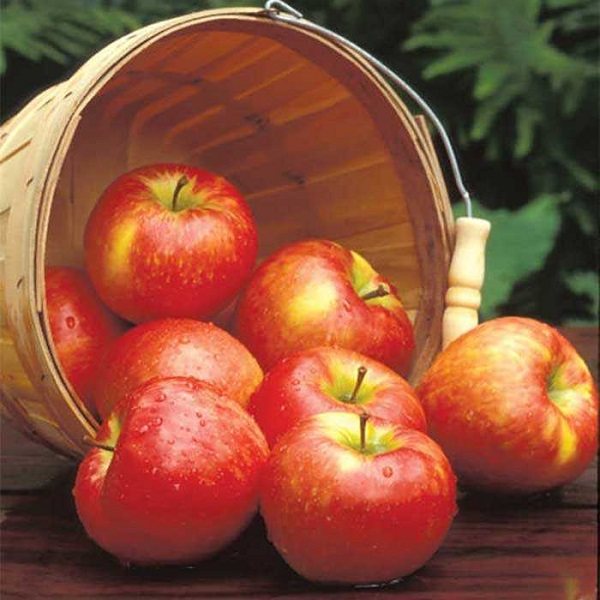

Pepin Saffron.
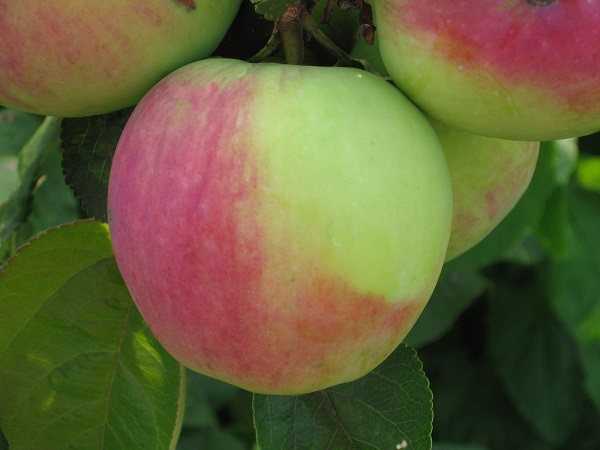

Sinap North.
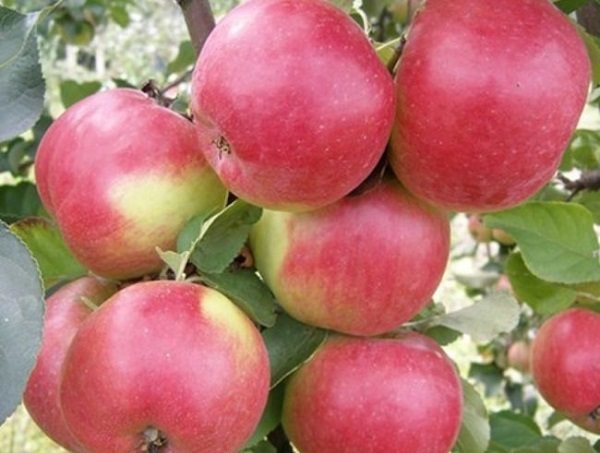

Zhigulevskoe.


Antonovka.
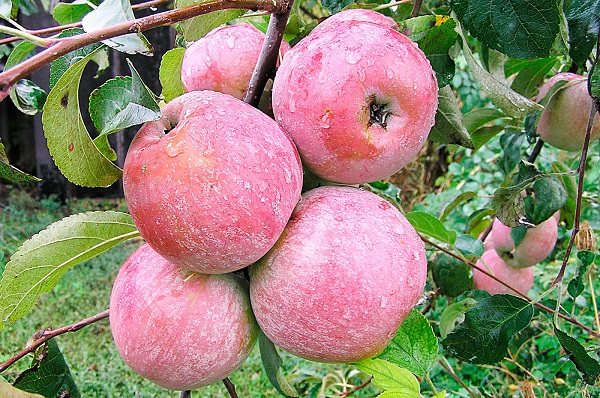

Welsey.
Apple tree Sinap Orlovsky quickly begins to bear fruit and gives the first harvest for 4-5 years after landing. Even earlier - in the 3rd year after planting, the dwarf form of the tree bears fruit. A seedling on a vigorous rootstock will give the first apple only for 5-6 years.
Apples ripen on time from late September to early October... Fruiting is not stretched, at one time you can collect all the fruits from the tree. An apple is considered ripe if its stem is easily separated from the branch.
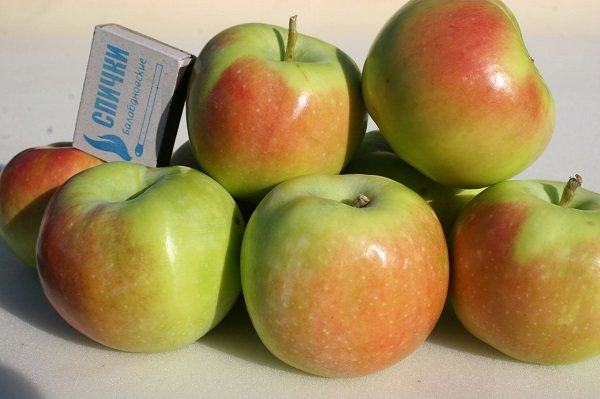

Ripe apples of Sinap Orlovsky.
Annual fruiting of the tree, even in a mature tree. Fruit buds are formed not only on short and long fruit twigs, but also on simple and complex ringlets.
Main characteristics
The apple tree of the Sinap Orlovsky type is high-yielding, as the description of the variety defines. However, this is far from the only characteristic of culture.
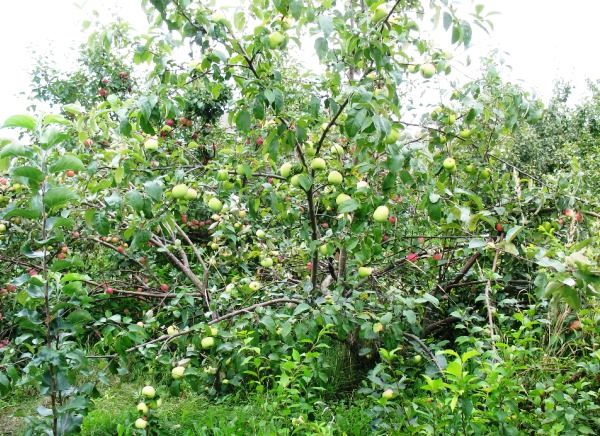

The fruits of the tree are medium in size, each weighing less than 0.15 kilograms. At the stage of ripeness, they acquire a yellow-green hue, and when stored, they gradually change color to golden. If the tree grows on the side well lit by the sun, then on ripe fruits they acquire a pinkish color. The peel of apples is dense, glossy.
Apple tree Oryol synap: varieties of varieties
Semi-dwarf
Classic cultivation option Orlovsky Sinap - on a semi-dwarf rootstock.
This speeds up the period of entry into fruiting up to 4-5 years after planting and reduces gigantic tree growth to 4.5-5 meters in height.
Apple trees grown on a semi-dwarf rootstock, shallow root system that penetrates the soil 2.5-3 meters deep.
On a vigorous rootstock
Saplings grown on a vigorous rootstock, reach 5.5-6 meters in height, they have deep root systemcapable of reaching deep sources of moisture. These trees late into fruiting, but also live longer - up to 45 years.
On a clone rootstock
Champion in growth and unpretentiousness - seedlings grown on a clonal rootstock (from seeds of tall and viable apple trees). These trees reach 7 meters in height and spread their crown 5-6 meters wide. Such apple trees extremely unpretentious, live up to 60 years old, are little affected by diseases, but bear fruit late - until the 10th year of life, and give less "marketable" apples.
IMPORTANT! In particularly fruitful years, the size of apples may become smaller. To avoid this, gardeners cut off part of the ovaries, rationing the crop.
Dwarf
For areas with high groundwater levels, apple trees on a dwarf rootstock are suitable. Their root system does not go below 1.5-2 meters deep, therefore, it requires a garter to the stakes in the first 2-3 years after planting.
Height "Dwarf" seedlings does not exceed 2.5-3 meters, they will first of all enter fruiting - 2-3 years after planting.
A close "relative" of the Sinap Orlovsky variety is Sinap Severny. They are similar in many ways, but the latter has smaller fruits.
Collection and storage
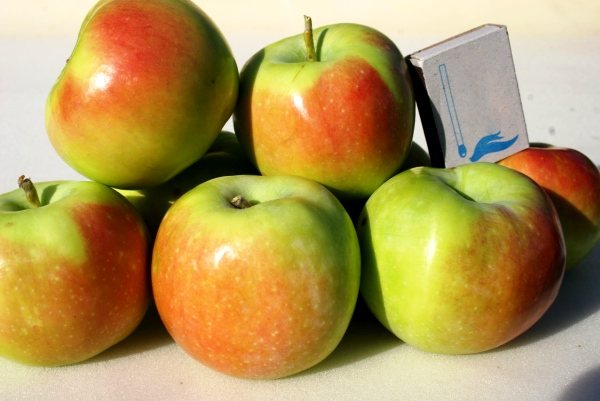

Sinap Orlovsky apples are harvested (depending on the growing region) in late September - early October. Experienced gardeners do not recommend harvesting fruits earlier than this period, since this can not only significantly impair their taste, but also significantly reduce their shelf life.
The great advantage of the variety is that ripe fruits do not fall off the branches, but are held on to them thanks to strong stalks. This circumstance contributes to the success of the subsequent storage of apples, which can lie until the end of spring, without losing either their taste or marketability.
A cool, dry room is required to store this winter variety. After sprinkling with dry wood shavings or wrapping them in paper, they are stored in small wooden boxes or in cardboard boxes with special openings for air exchange.
Where to buy seedlings?
Any planting material best purchased from official nurserieslocated in the same climatic zone. This is especially true for seedlings grown up to 3-4 years of age. It is more difficult for them to get used to new conditions, especially colder ones.


For guaranteed good fruiting, purchase seedlings from nurseries.
You can purchase a tree from private gardeners who grow seedlings for sale. But here you have to hope for the seller's honesty.
Attention! Buying an apple tree through an online store is not always the best choice, because even a high-quality seedling can be damaged during postage, dry out or break off.
Useful Tips
- Planting young seedling, do not water it once every 5 days. From waterlogging, the roots do not receive oxygen, the tree grows worse and may die;
- The tender sprouts of young apple trees are very fond of aphids. So that the ants cannot transfer it to the branches, wrap the tree trunk with a sticky trapping belt... This measure will save the apple tree for the whole summer;
- If in doubt about the number of required fertilizers - add a lower dose is better than a higher dose... Due to the abundance of feeding, a chemical burn may occur in the apple tree;
- Move all diseased branches, leaves and fruits outside the area and burn... Spores of fungal plants can be airborne, infecting other plantings;
- A special device - "fruit picker" will help to remove the crop from tall branches. You can buy it in the store or do it yourself.

